e
q
u
e
s
t
a
d
e
m
o < back
Data Masking Components: City Names
{TOC}
"CityCity Name Data Masking Component"Component
API Reference, CLR Reference (links)
Usage Instructions:
Purpose
The purpose of the component is to mask values of Citycity names with other realistic yet falsesubstituted values of the city names. ComponentThe component contains about 700 possible substitution values. City names are the part of the PHI data requirements for all geographic subdivisions smaller than a state of 18 data elements per HIPAAHIPAA'a Safe Harbor.
Algorithm
Variation of Random Substitution data masking algorithm.
Description
  City
City |
API Reference, CLR Reference (links)
Usage Instructions:
| 1. Configure a source that contains the column with the element of city name. A source could be connected to any database, including but not limited to SQL Server , Oracle, Sybase, mySQL, as well as a file. |

|
| 2. Drag and Drop "Masking City Name" data masking component, then connect the source and the "Masking City Name" data masking component with the data flow path: |
 |
| 3. Now, the data flow path (the blue arrow) passes proper meta-data to the "Masking City Name" data masking component. If you click on the data flow path, you will see: |
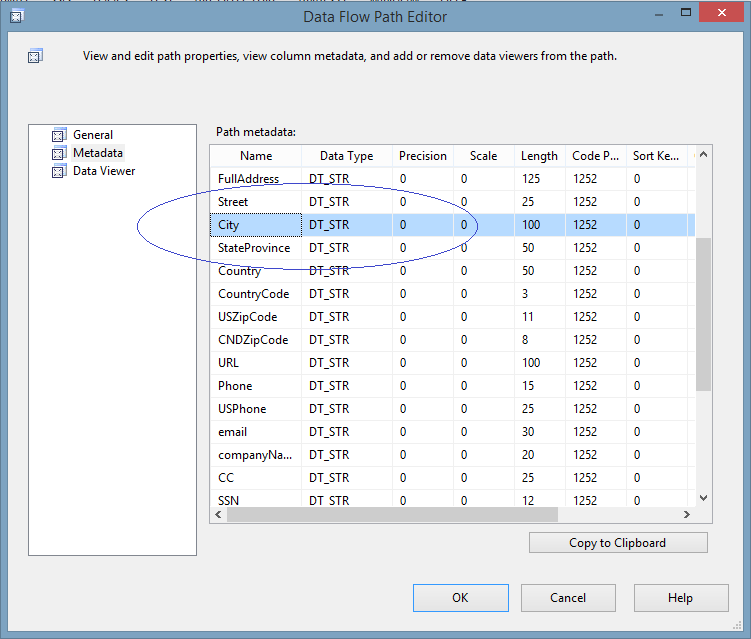 |
| 4. Now that the metadata for the "Masking City Name" component exists, and values are passed into the data masking component, please open the component editor: |
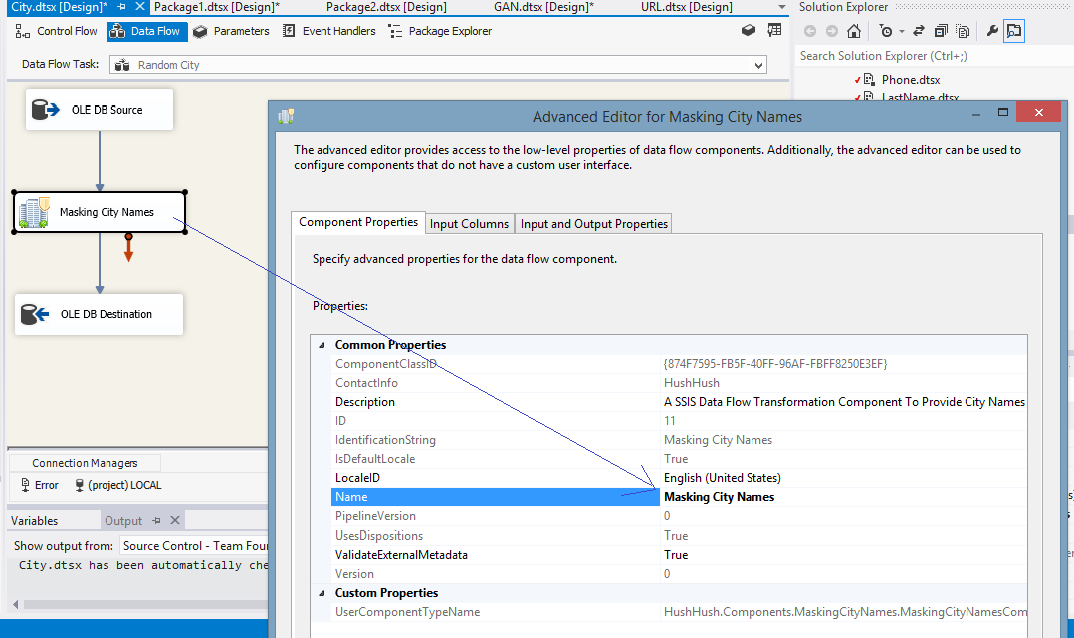 |
|
5. In the second tab, there are input columns. Please check-mark only |
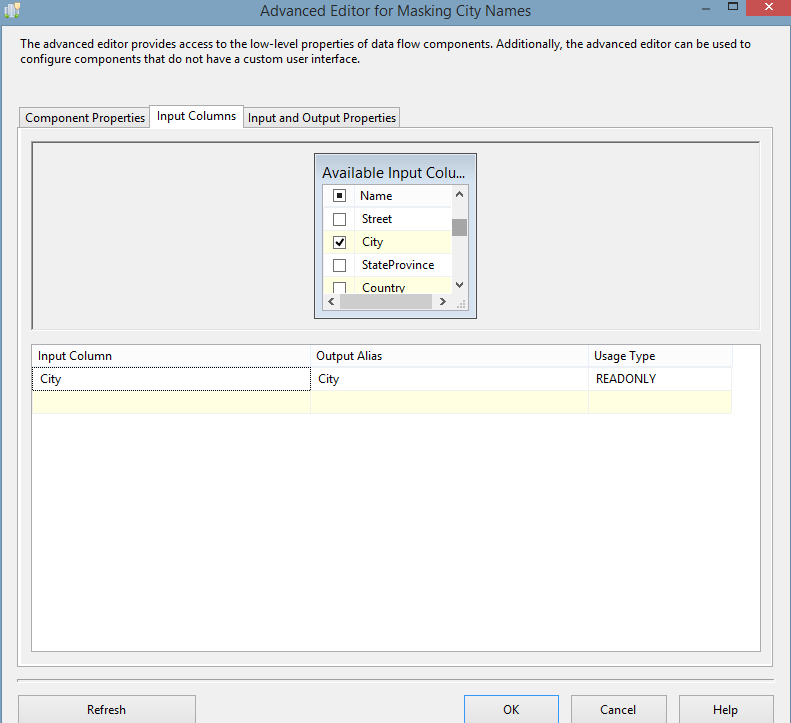 |
|
6. This will create an extra |
 |
|
7. Create a connection manager for the destination and configure source component for the destination. In the connection manager, in the tab “Mappings”, specify that you want newly created |
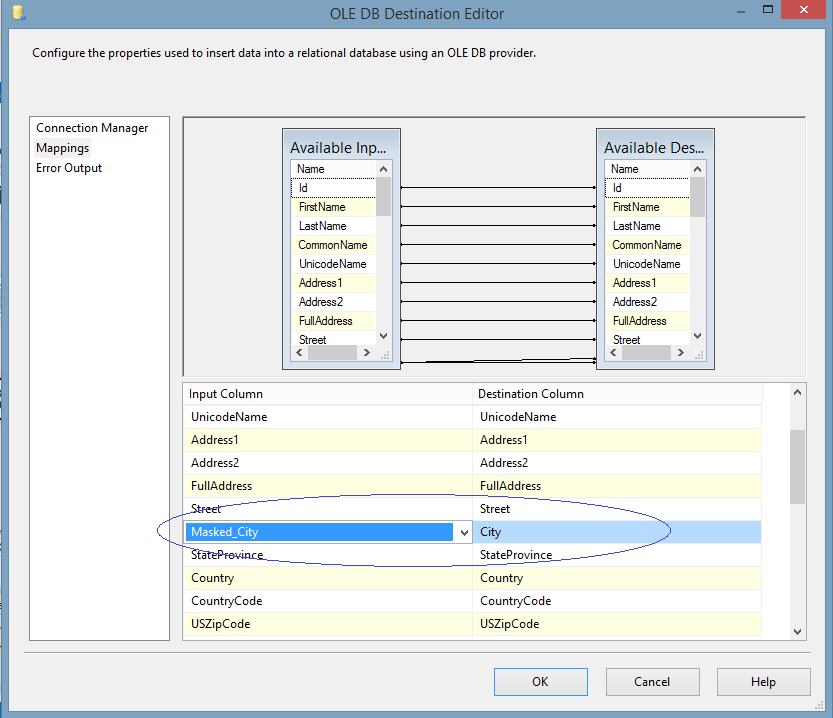 |
|
8. Now, all the configurations are complete for the valid values.
You can run the package with the |
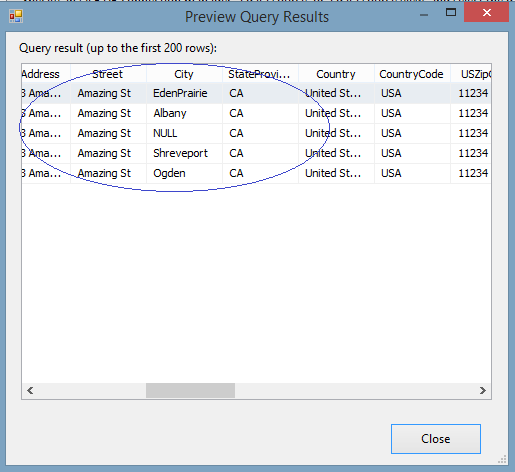 |
Error Handling
| 9. If, however, there are invalid values in the package's source, one would need to configure error handling. Invalid values are those that are not conforming to the rules of the entity. To handle invalid values, each data masking component has error handling precedence constraint. One needs to create error destination connection and connect red arrow (error handling constraint) with this destination. As the connection is made, one needs to configure the state of failure: “Fail”,”Ignore” or “Redirect”. |
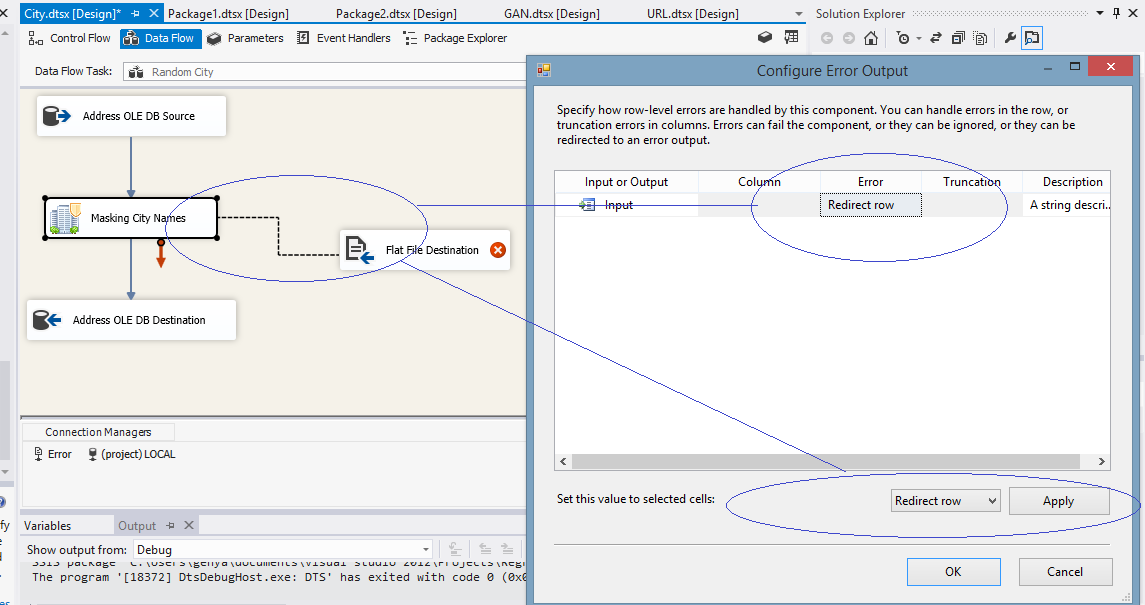 |
|
10. It is recommended that one re-directs the output into the error destination, so that later one be able to analyze and process data for quality purposes. |
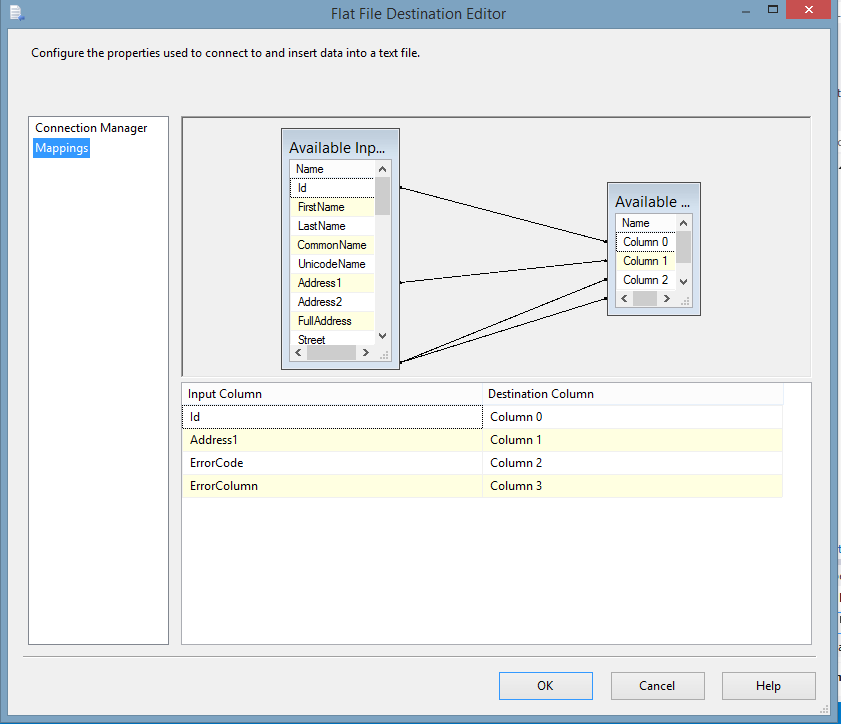 > >
|
